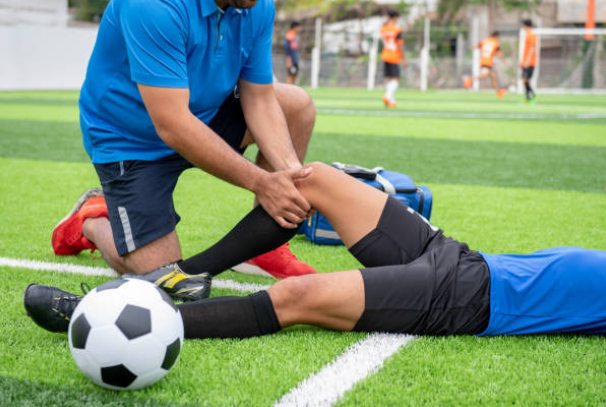Participation in sports or exercise is an important step in maintaining your health. Exercise strengthens your heart, bones and joints and reduces stress, among many other benefits. But, especially for the weekend athlete, injuries during participation in sports are easy to avoid by taking some precautions. Often, these injuries occur in someone who is just taking up sports as a form of activity, doesn’t use proper safety equipment or becomes overzealous.
The more commonly injured areas of the body include the knees, ankles, shoulders, elbows and spine. Remember to discuss any new exercise program with your doctor of chiropractic prior to beginning. You want to start any new exercise slowly and gradually build up to longer workouts.
It’s very important to warm up properly prior to starting a workout. Stretching first is recommended to prevent injuries during your workout. Breathe in and out slowly during stretching. Do not bounce or jerk your body while stretching. Stretch and hold for 15-20 seconds minimum giving the Golgi Tendon Organs (GTO) time to relax. If you feel pain during stretching, stop what you are doing as pain is your body’s way of telling you something is wrong. Don’t stretch your low back by flexing forward fully and compressing your discs, for the first hour of the morning. Discs are at their fullest hydration and more susceptible to injury.
Drink Water!
Drink adequate water. To determine the proper amount of water your body needs each day, take your body weight and cut it in half. That figure is the number of ounces of water your body needs daily. If you weigh 150 pounds, you need to drink 75 ounces of water per day. Avoid sports and energy drinks. For a normal sports activity or workout, just stick with water. Water is the best method of hydration, especially for any exercise 60 minutes in duration or less. Most energy drinks contain large amounts of caffeine, which provides a short-term energy boost. They also contain sugar, and the combination can lead to irritability, nervousness, rapid heartbeat, and increased blood pressure. The best way to gain energy if you feel tired is through exercise, sleep, and good nutrition. These are all elements your doctor of chiropractic can counsel you on.
Listen to Your Body!
If doing an activity hurts, then stop. Always stretch and warm up prior to exercising. But if you are engaged in a sports activity and you feel pain, then stop immediately.
Warm Down!
It is just as important to ease out of your sports activities with a warm-down, just like you eased into the sport with a warm-up. When you are finished with your sport, take a few minutes to walk around and then do some stretching.
Diagnosis and Treatment
Your doctor of chiropractic can diagnose your sports injury with a history and physical exam, using X-rays, MRI or ultrasound if needed. The type of injury found will affect the treatment.

